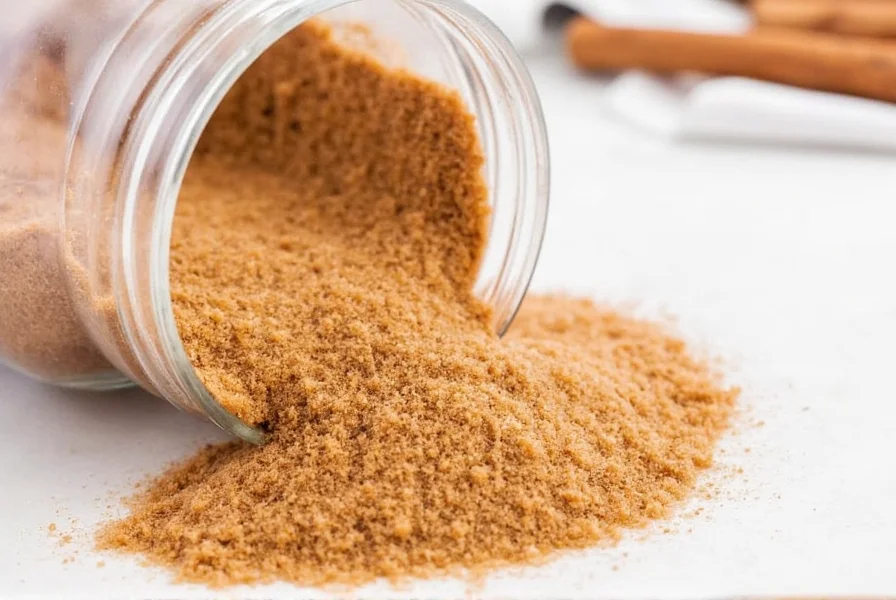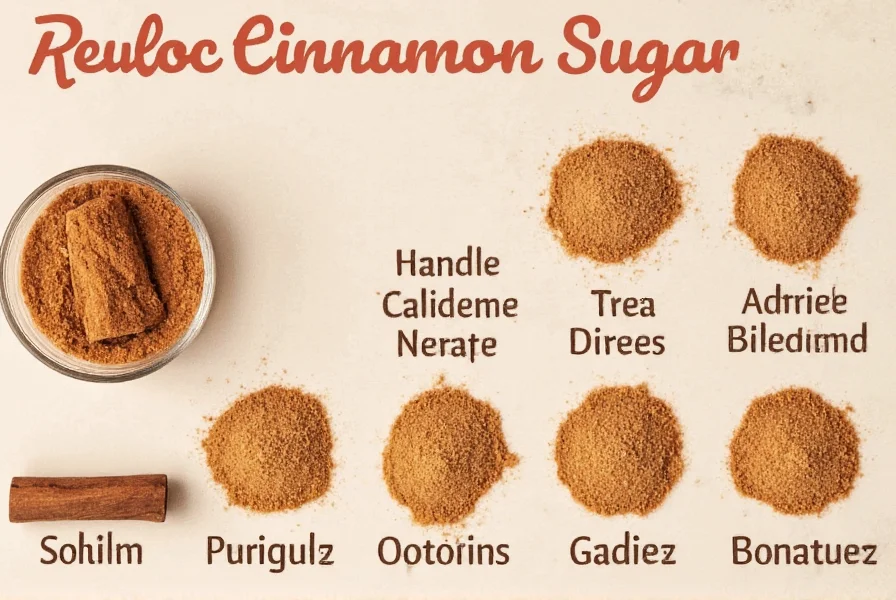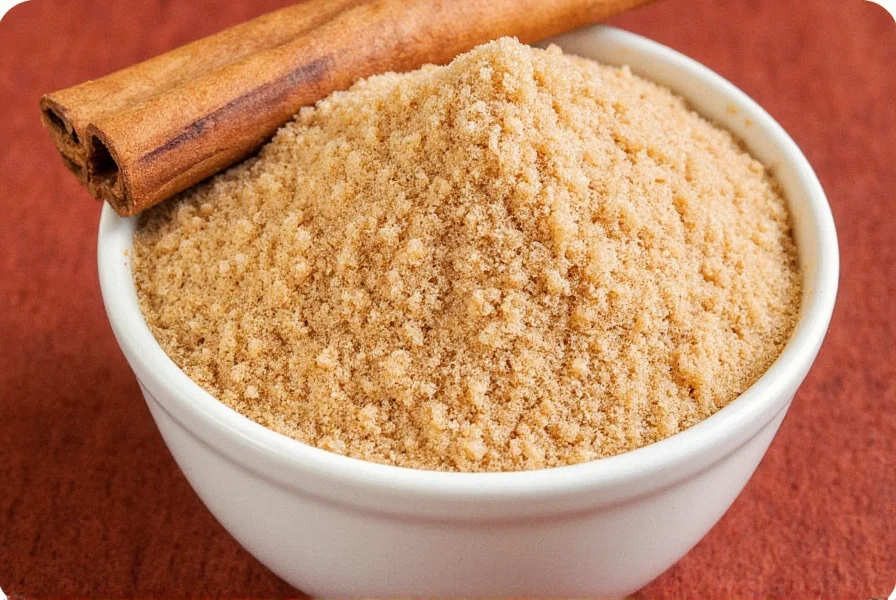For generations, the simple pairing of cinnamon and sugar has delighted palates worldwide. This timeless flavor combination requires minimal ingredients yet delivers maximum impact across countless applications. Whether you're reviving childhood memories of cinnamon toast or elevating sophisticated desserts, mastering this basic recipe unlocks endless culinary possibilities.
The Science Behind the Perfect Ratio
Understanding the ideal cinnamon to sugar ratio transforms good recipes into exceptional ones. While personal preference plays a role, culinary professionals consistently recommend a 1:4 ratio as the foundation. This proportion balances cinnamon's warm, complex notes with sugar's sweetness without overwhelming either component.
For those seeking the best cinnamon to sugar ratio for baking, consider these adjustments:
| Application | Recommended Ratio | Special Notes |
|---|---|---|
| Basic mixture | 1:4 | Standard for most applications |
| Baked goods filling | 1:3 | Increased cinnamon for stronger flavor |
| Churros coating | 1:5 | Extra sugar helps caramelization |
| Spiced coffee | 1:8 | Subtle flavor enhancement |
Creating Your Cinnamon Sugar Mixture
Follow these straightforward steps for how to make cinnamon sugar mixture that stays fresh and flavorful:
- Gather ingredients: 1 teaspoon ground cinnamon (Ceylon or Cassia), 4 teaspoons granulated sugar
- Use a small mixing bowl to combine ingredients
- Sift both ingredients together for even distribution
- Mix thoroughly until uniform in color
- Store in an airtight container away from heat and moisture
This basic cinnamon sugar for churros recipe works equally well for numerous applications. The sifting process prevents clumping and ensures consistent flavor in every use.

Versatile Applications for Cinnamon Sugar
Move beyond the basics with these creative uses for your homemade blend:
Breakfast Delights
Transform ordinary toast into a treat with the classic cinnamon sugar toast recipe. Spread softened butter on warm toast, then generously sprinkle your cinnamon sugar mixture. For extra indulgence, melt the sugar slightly under a broiler to create a delicate caramelized crust.
Baked Goods Enhancement
Incorporate cinnamon sugar into muffin tops, swirl into bread dough, or use as a finishing touch on cookies. When preparing cinnamon rolls, layer the mixture between dough and filling for intensified flavor pockets.
Beverage Boost
Add a pinch to coffee, hot chocolate, or apple cider for instant warmth. The sugar dissolves while the cinnamon infuses your drink with aromatic complexity.
Pro Tips for Perfect Results
Professional bakers recommend these techniques for homemade cinnamon sugar without cornstarch that maintains quality:
- Use fresh cinnamon (replace every 6 months for optimal flavor)
- Store in a cool, dark place to preserve volatile oils
- Add a silica packet to containers in humid climates
- For finer texture, process in a spice grinder before mixing
- When coating fried foods like churros, apply while still warm for better adherence
Customizing Your Cinnamon Sugar
Elevate your basic mixture with these sophisticated variations:
Vanilla-Infused Cinnamon Sugar
Add 1/4 teaspoon pure vanilla extract to the mixture. Spread on parchment paper and dry at the lowest oven setting (170°F) for 20 minutes, stirring occasionally.
Citrus Zest Variation
Incorporate 1 teaspoon finely grated orange or lemon zest for a bright counterpoint to the warm spices. Ideal for shortbread cookies and tea cakes.

Storage and Shelf Life
Properly stored, your cinnamon sugar variations for desserts will maintain peak flavor for 4-6 months. Use glass containers with tight-fitting lids, and avoid introducing moisture. Check periodically for clumping or diminished aroma, which indicates it's time to refresh your batch.
Frequently Asked Questions
What's the difference between Ceylon and Cassia cinnamon for this recipe?
Ceylon cinnamon offers a delicate, citrusy flavor ideal for subtle applications, while Cassia provides a stronger, more traditional cinnamon taste. For most cinnamon sugar recipes, Cassia works best due to its robust flavor that holds up against sugar's sweetness.
Can I use brown sugar instead of white sugar?
Yes, but with adjustments. Brown sugar adds moisture and molasses notes. Use a 1:3 ratio (more cinnamon) to compensate for brown sugar's stronger flavor, and expect a darker, more complex mixture ideal for autumnal recipes.
Why does my cinnamon sugar clump together?
Clumping occurs due to moisture absorption. Prevent this by ensuring your ingredients are completely dry before mixing, storing in an airtight container with a silica packet, and avoiding humid environments. If clumping occurs, sift the mixture before use.
How can I make cinnamon sugar stick to baked goods?
For optimal adherence, apply cinnamon sugar while baked goods are still warm. The residual moisture helps the mixture stick. For items like churros, toss them in the mixture immediately after frying while the surface is still slightly moist.
Can I make a sugar-free cinnamon mixture?
Yes, substitute granulated sugar with erythritol or monk fruit sweetener in a 1:4 ratio. Note that sugar-free versions won't caramelize when heated and may have a cooling aftertaste depending on the sweetener used.











 浙公网安备
33010002000092号
浙公网安备
33010002000092号 浙B2-20120091-4
浙B2-20120091-4